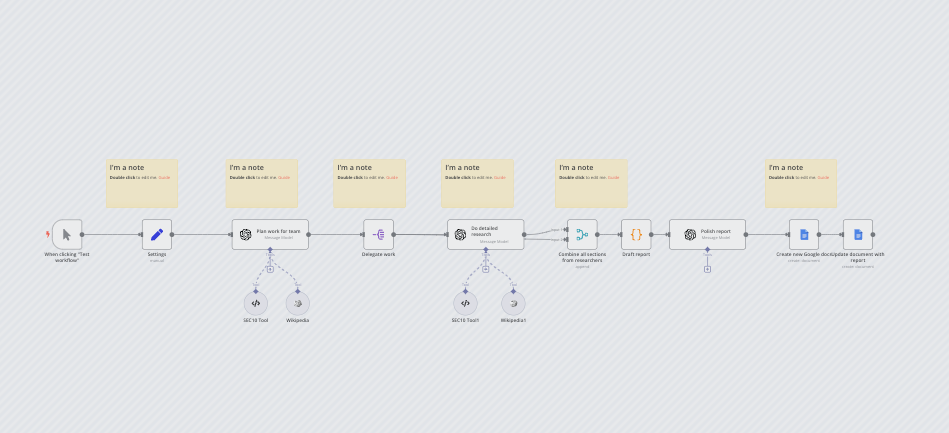Why Retail Needs RAG (Retrieval-Augmented Generation)
The retail industry is constantly evolving, and staying competitive requires more than just great products or services.

Customers seek personalized experiences, quick service, and immediate solutions in today's data-driven environment: an advanced AI technology that merges data retrieval with generative capabilities, transforming how retailers function and connect with their customers.
RAG empowers retailers to harness their vast amounts of data, delivering actionable insights, personalized customer interactions, and operational efficiency. Let’s explore why retail needs RAG, with practical examples of its implementation and a quick guide to getting started.

3 Practical Examples of RAG in Retail
1. Personalized Customer Experiences
Imagine entering a store or browsing online and being greeted with recommendations tailored to your tastes. RAG makes this possible by analyzing customer data such as purchase history, browsing behavior, and preferences. For example:
- An e-commerce platform uses RAG to suggest products based on past purchases and real-time inventory levels. If a customer frequently buys skincare products, the system might recommend complementary items like serums or moisturizers currently in stock.
- Retailers can also use RAG for hyper-personalized marketing campaigns. For instance, it can generate email content featuring products a customer will likely purchase based on their recent activity.
Impact: Higher customer satisfaction, increased conversion rates, and stronger loyalty.
2. Smarter Inventory Management
Inventory management has long been a pain point for retailers. RAG simplifies this by pulling data from sales trends, seasonality, and real-time inventory updates to optimize stock levels. For example:
- A fashion retailer uses RAG to track top-selling items and predict demand spikes during seasonal sales. The system automatically reorders stock when inventory drops below a certain threshold.
- It can also identify slow-moving items and suggest targeted discounts or promotions to clear out excess inventory.
Impact: Reduced stockouts or overstocking, minimized waste, and maximize sales opportunities.

3. Enhanced Customer Support
RAG-powered chatbots are transforming customer service by providing instant, accurate responses based on comprehensive knowledge. For example:
- A chatbot equipped with RAG can retrieve product details, troubleshooting guides, or the order information in real-time. If a customer asks about the status of their order or how to assemble a product, the bot delivers precise answers without human intervention.
- These systems also learn from each interaction, continuously improving their responses.
Impact: Faster issue resolution, reduced support costs, and improved customer trust.
How to Implement RAG in Retail:
A Quick Guide
Implementing RAG might sound complex, but breaking it down into manageable steps can simplify the process:
Step 1: Identify Key Use Cases
Start by pinpointing areas where RAG can have the most significant impact:
- Is your priority improving customer engagement?
- Do you need better inventory management?
- Are you looking to enhance marketing personalization?
Collaborate with stakeholders like marketing teams, operations staff, and data analysts to prioritize these use cases.
Step 2: Build a Centralized Data Layer
RAG thrives on diverse datasets. Consolidate your data from various sources—e-commerce platforms, CRM systems, social media analytics—into a centralized database. This ensures your AI has access to accurate and up-to-date information.
Step 3: Choose the Right Tools
Select AI tools or platforms that support RAG capabilities:
- Use large language models (LLMs) integrated with retrieval systems.
- Opt for solutions that allow real-time data updates for dynamic responses.
Platforms like MongoDB or HatchWorks AI offer frameworks for building RAG-powered applications tailored to retail needs.
Step 4: Train Your AI System
Train your model using proprietary data relevant to your business:
- Product catalogues
- Customer reviews
- Transaction histories
- Brand values
- Retails opening hours
- Public knowledge built with all closing tickets
This ensures the system generates contextually accurate outputs while maintaining brand consistency.
Step 5: Test and Iterate
Run pilot programs in specific areas of your business (e.g., chatbot support or personalized recommendations). Gather feedback from customers and employees to refine the system before scaling it across all operations.
The Future of Retail is Here

Retailers who embrace technologies like RAG are not just keeping up—they’re setting themselves apart in an increasingly competitive market.
By delivering personalized experiences, streamlining operations, and enhancing customer support, RAG helps businesses build stronger customer relationships while driving growth.
